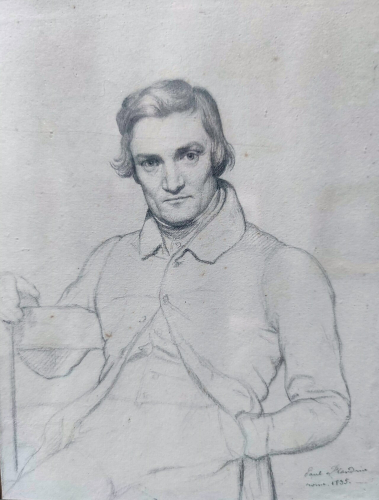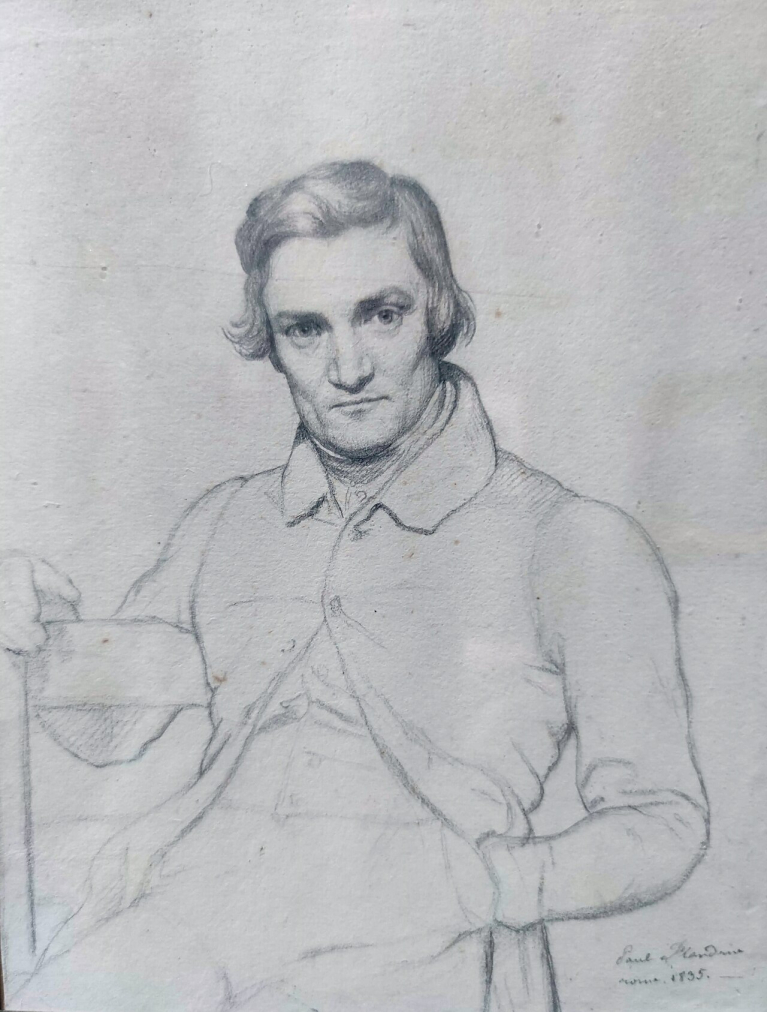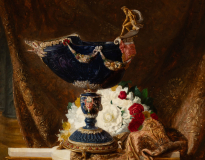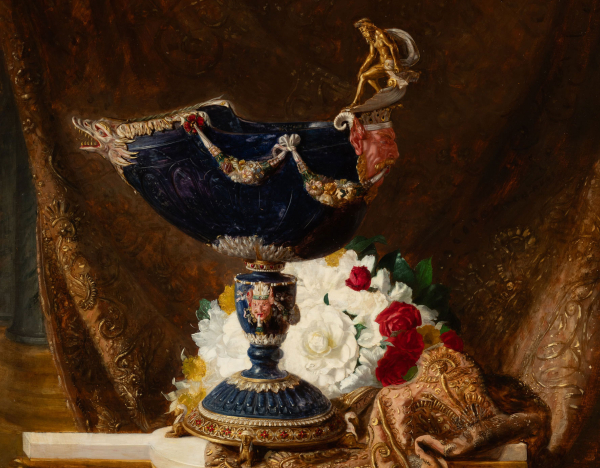Blaise Alexandre Desgoffe
( 1830-1901 )
Biography


A major figure in 19th-century French still-life painting, Desgoffe began his apprenticeship at the École des Beaux-Arts de Paris in 1852, in the studio of Hippolyte Flandrin. He then continued his training under the academic William-Adolphe Bouguereau. Although his early training was in history painting, it was in still life that he found his true vocation, an artistic genre that led him to make a name for himself.
Desgoffe first exhibited at the Salon des Artistes Français in 1854, with a work depicting a game of bilboquet, a portrait, and two studies of agate goblets. However, it was during his successive appearances at the Salon, between 1857 and 1882, that he really came into his own as a still-life painter. His virtuosity in depicting precious objects and his striking realism won the admiration of critics, who compared him to 17th-century Dutch still-life masters such as Willem Kalf and Pieter Claesz.
Desgoffe specialized in painting ceremonial still lifes, featuring luxury objects and rare items, often inspired by the collections of the Louvre. He devotes part of his work to observing and reproducing these objects, mainly 16th-century pieces from the Galerie d'Apollon and the Salle Richelieu.
His paintings, including rock crystal vases, agate ewers and goldsmith's and silversmith's pieces, are characterized by an impressive sense of detail and an exceptional ability to render the texture of materials ranging from glass and metal to fabrics and precious stones. From the 1870s onwards, he broadened his palette to include objects of Chinese, Japanese and Greek origin, probably at the request of his clients.
Desgoffe's talent was quickly recognized: he received several awards, including a 3rd class medal in 1861 and a 2nd class medal in 1863. At the 1867 Exposition Universelle, he exhibited an emblematic work, Un coin de cabinet de Louis XVI, which perfectly illustrates his decorative approach and taste for luxury. His work was unanimously praised for its technical skill, to the point that critic Roger Ballu, in his 1880 book La peinture de Salon, asserted that the public was ecstatic at the virtuosity of his still lifes, often described as perfect “trompe-l'œil”.
However, despite his successful career as a still-life painter, Desgoffe was not immune to controversy. His inflated ego and conflicting relationships with some of his contemporaries fueled tensions within the Parisian art world.
Despite this, he remains a key figure of the 19th century, and his work, although declining in 20th-century Europe, continues to enjoy a high reputation in the United States, where his influence extends to artists such as William Merritt Chase and William Michael Harnett.
At the end of his career, Desgoffe was awarded the Chevalier de la Légion d'honneur, but his work, as academic as it was spectacular, was gradually forgotten in Europe. He nevertheless left a considerable legacy in the history of still-life painting, having marked his era with the perfection of his technique and his attention to detail, as well as with his contribution to the evolution of this pictorial genre in the academic tradition.
93400 Saint-Ouen sur Seine

